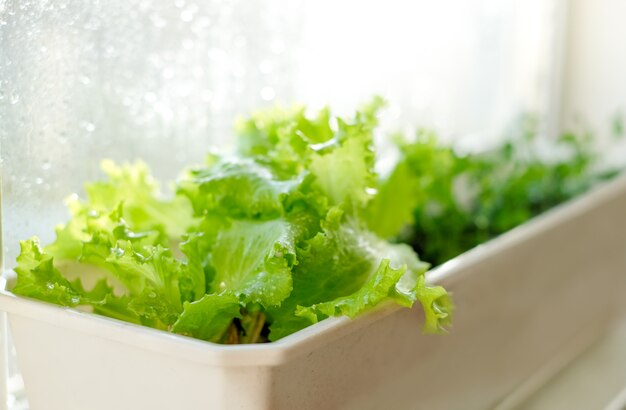Mastering the Art of Crisp Lettuce: Your Ultimate Guide to Freshness
Lettuce is the bright, refreshing foundation of many salads, sandwiches, and wraps. But keeping it crisp and fresh can sometimes seem like an elusive goal. We’ve all experienced the disappointment of reaching for lettuce only to find it wilted and unappetizing. Fear not! Here’s how to keep lettuce crisp in the refrigerator and extend its shelf life effortlessly.
Why Does Lettuce Wilt?
Understanding why lettuce wilts is the first step in combating it. The crispness of lettuce largely depends on its water content. Lettuce wilts when it loses moisture, typically because it's stored in a way that doesn’t allow it to breathe or maintain its natural hydration levels.
Several factors can contribute to this moisture loss:
- Air exposure: Cuts down on humidity, leading to moisture evaporation.
- Temperature fluctuations: Encourage spoilage and wilting.
- Improper storage: Stifles airflow and traps excess moisture, promoting decay.
How to Keep Lettuce Fresh: A Step-by-Step Guide
Keeping your lettuce fresh involves specific steps from the moment you bring it home. Follow this comprehensive guide to maximize lettuce crispness.
Choosing the Right Lettuce 🌿
Start by picking the freshest lettuce in the store. Look for leaves that are:
- Bright in color
- Free from browning on the edges
- Crisp and firm to the touch
Storage Techniques
Store your lettuce properly using these proven methods:
1. Wrap in Paper Towels
- Why: Paper towels absorb excess moisture and prevent sogginess.
- How:
- Start by separating the leaves, discarding any that are damaged or wilted.
- Rinse and dry them thoroughly. Excess water is the enemy of freshness.
- Place the leaves on dry paper towels and gently roll them up.
- Store in a perforated plastic bag or airtight container.
2. Use a Salad Spinner
- Why: Spins out excess water efficiently, which can contribute to sogginess if left unchecked.
- How:
- Rinse your lettuce in cold water.
- Place in the salad spinner and spin until dry.
- Transfer the dry leaves to a paper towel-lined container for the perfect moisture balance.
Container Matters
Choose containers that maintain the right humidity for lettuce:
- Perforated plastic bags allow for slight air circulation.
- Airtight containers can be used if you first line them with paper towels to minimize condensation.
Optimal Refrigerator Storage
Store your prepared lettuce in the crisper drawer, which is designed for humidity control:
- Set to a moderate humidity setting if adjustable.
- Keep away from the refrigerator door to prevent temperature fluctuations.
Related Topics: Best Practices for Leafy Greens Storage
Prepping Lettuce for Long-Term Freshness
In addition to proper storage, consider these tips:
- Cut with care: Use a clean, sharp knife to avoid bruising.
- Handle gently: Rough handling can bruise leaves, hastening spoilage.
Understanding Lettuce Varieties 🥬
Different types of lettuce may require slightly varied care:
- Romaine and iceberg lettuces are quite sturdy and can handle a bit more humidity.
- Leaf lettuces (e.g., red leaf, green leaf) are more delicate and benefit from careful humidity management.
Environmental Influences on Lettuce Shelf Life
Factors that can affect lettuce longevity include:
- Seasonal changes: Humidity and temperature shifts can impact freshness.
- Type of packaging: Plastic wrap versus eco-friendly alternatives may affect airflow.
Mistakes to Avoid
- Don’t chop too early: Cut leaves start losing freshness quickly.
- Avoid wet storage: Excess moisture fosters decay, so always dry leaves thoroughly.
Incorporating Lettuce into Your Meal Prep Routine
Integrating lettuce into your meal prep is easier when it's properly stored:
- Salad kits: Prepare individual servings, storing components separately to mix before eating.
- Layering techniques: When assembling salads in jars, always add lettuce at the top to avoid contact with dressing and moisture-heavy ingredients.
Lettuce Longevity: Signs of Spoilage
Be alert to these signs that lettuce is past its prime:
- Slimy texture: A clear indication of spoilage.
- Brown spots: Suggests bacterial growth; remove affected leaves.
Key Takeaways: Quick Lettuce Longevity Tips
Here's a handy summary to ensure your lettuce stays crisp and fresh:
- 📝 Choose wisely: Pick the freshest heads with a crisp texture.
- 💧 Rinse and dry: Always start with a thorough rinse and spin.
- 📦 Store smart: Use paper towels and appropriate containers.
- 🔌 Mind the fridge: Utilize the crisper drawer for best humidity control.
- ✂️ Handle carefully: Gentle handling prevents damage and extends freshness.
By adopting these strategies, you'll keep your lettuce crisp and delicious, ready to enhance any meal with its refreshing crunch. Your next salad or sandwich awaits with unmatched freshness, thanks to these practical storage techniques.
